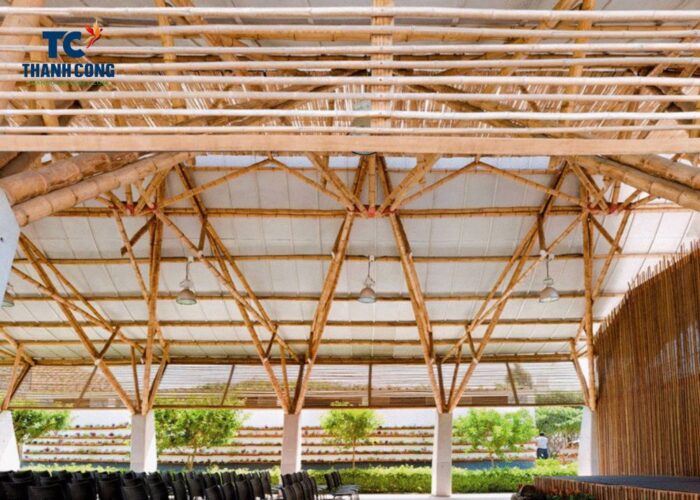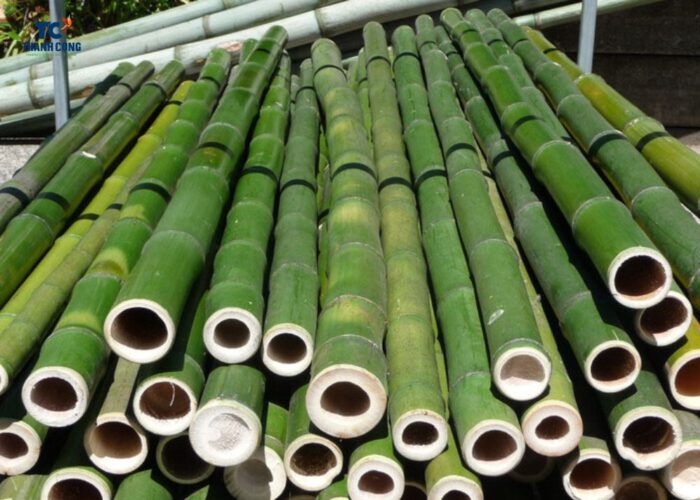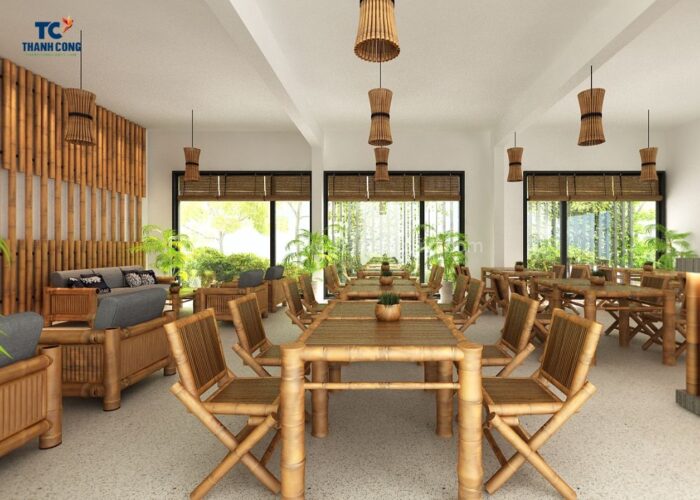Bamboo furniture has gained popularity as a sustainable and eco-friendly alternative to traditional wood furnishings. In this exploration, we delve into the characteristics that make bamboo furniture an appealing choice, bamboo furniture advantages and disadvantages. Understanding these aspects will empower you to make an informed decision as you navigate the world of eco-conscious furniture options.
Contents [hide]
1. Applications of Bamboo
Bamboo, recognized for its versatility and sustainability, plays a crucial role in the crafting of exquisite bamboo items. Its rich cultural heritage and eco-friendly attributes position bamboo as an ideal material for creating both beautiful and functional pieces, including but not limited to basketry, furniture, home decor, and utensils and kitchenware.
Handcrafted bamboo products are gaining popularity due to their uniqueness, natural appeal, and environmentally friendly characteristics.

Bamboo can be used for a variety of construction purposes due to its strength, durability, and sustainability. Some common uses of bamboo for building materials include:
- Flooring – Bamboo Plywood and Panels: Bamboo is one of the most sustainable materials for flooring. It can withstand heavy foot traffic and is more resistant to dents and scratches than some hardwoods.
- Furniture: Bamboo is a common material for making furniture, including chairs, tables, and shelves. It’s known for its strength, light weight, and natural beauty.
- Structural Elements: Bamboo can be used to create structural elements such as beams, columns, and trusses in buildings. It is particularly strong and can support significant loads.
- Roofing: Bamboo can be used to create roof structures, such as rafters and thatch, in traditional and eco-friendly construction. It provides an aesthetically pleasing and natural roofing option.
- Fencing: Bamboo can be used for fencing and screening purposes in outdoor settings. It provides a natural and eco-friendly alternative to traditional fencing materials.
- Siding: Bamboo siding is a sustainable and visually appealing choice for covering the exterior of buildings. It can be used in both residential and commercial construction.
- Stairs and Railings: Bamboo can be used to create stairs and railings, both for interior and exterior applications.
- Decorative Elements: Bamboo can be used for decorative purposes in construction, such as screens, room dividers, and lattices.
2. Advantages of Bamboo Furniture
Bamboo furniture comes with several advantages, making it a popular and sustainable choice for many consumers. Here are some key benefits of bamboo furniture:
- Bamboo is a highly renewable resource as it grows rapidly. It can be harvested in a relatively short time compared to traditional wood, making it an eco-friendly option. Bamboo is known for its strength and durability. It can withstand significant pressure and is often comparable to hardwoods in terms of durability.
- Bamboo furniture is generally lightweight, making it easy to move and rearrange. This characteristic is particularly useful for those who like to change the layout of their living spaces. Bamboo is a flexible material, allowing for various design possibilities. It can be shaped into different styles and forms, providing versatility in furniture design.

- Bamboo furniture has a natural and aesthetically pleasing appearance. It can add a touch of warmth and elegance to both indoor and outdoor spaces. In many cases, bamboo furniture can be more affordable than traditional hardwood furniture. This makes it an attractive option for those looking for budget-friendly yet stylish choices.
- Bamboo furniture is generally easy to care for. It requires minimal maintenance and can be cleaned with mild soap and water. And bamboo is naturally resistant to pests and insects. This makes bamboo furniture a hypoallergenic option for those who may be sensitive to certain materials.
- Bamboo plants regenerate quickly after harvesting, making them a sustainable and environmentally friendly choice. Bamboo is suitable for both indoor and outdoor use. It can withstand different climates, although protective measures may be necessary for prolonged exposure to extreme weather conditions.
3. Disadvantages of Bamboo Furniture
While bamboo furniture offers several advantages, it’s essential to consider potential disadvantages as well. Here are some drawbacks associated with bamboo furniture:
- Vulnerability to Moisture: Although bamboo has natural resistance to some moisture, excessive exposure to humidity or direct contact with water can lead to damage such as warping, cracking, or mold growth.
- Scratching and Denting: Bamboo may be susceptible to scratches and dents, particularly in areas with heavy use. Proper care and protective measures can help mitigate this issue.
- Limited Color Options: Bamboo furniture tends to have a natural, light color, and options for staining or painting are limited compared to other materials. This may be a disadvantage for those seeking a wider range of color choices.
- Susceptibility to Fading: Bamboo furniture exposed to direct sunlight over extended periods may experience fading or discoloration. Protective measures, such as using UV-resistant finishes or placing furniture in shaded areas, can help minimize this issue.
- Limited Load Capacity: While bamboo is strong, it may not have the same load-bearing capacity as some hardwoods. Care should be taken to avoid placing excessively heavy items on bamboo furniture.
4. Tips When Buying Bamboo Furniture
Bamboo is an environmentally friendly, durable and beautiful material, used to make many types of furniture such as tables, chairs, beds, cabinets, shelves… However, when buying bamboo furniture, you need to pay attention to the following things:
- Choose bamboo with good quality, not damaged by termites, cracks, warping or mold. You can check by tapping lightly on the bamboo and listening to the sound. If the sound is clear and resonant, the bamboo is of good quality. If the sound is dull and short, the bamboo may be damaged. You can choose natural bamboo or treated bamboo to have different colors such as white, yellow, brown, black… You should also consider the size and shape of the furniture to fit your space.
- Choose bamboo that has been treated to prevent termites, mold. You can ask the seller about the process of treating bamboo and request a certificate if available. You should also check if the bamboo is glued or painted with chemicals, as this may affect your health.

- Choose bamboo with reasonable price and good warranty. You should compare the prices of different stores and choose a reputable store with a good warranty policy. You should also ask the seller to guide you on how to preserve and clean bamboo furniture to extend their lifespan.
- Choose professional bamboo furniture stores or showrooms with a good reputation. These establishments often offer a wide range of choices and high-quality products. If possible, visit the showroom or store in person to inspect the products and assess their quality before making a purchase.
In conclusion, bamboo furniture offers a range of advantages, including sustainability, durability, and aesthetic appeal. However, potential buyers should carefully consider their specific needs and the environment in which the furniture will be placed. By being aware of both the advantages and disadvantages, consumers can make informed decisions that align with their values and preferences.
If you have any further questions, don’t hesitate to send thanhcongcraft an email us at info@thanhcongcraft.com or message us at WhatsApp: +84967485411. Hope to serve you soon! Best regard!


